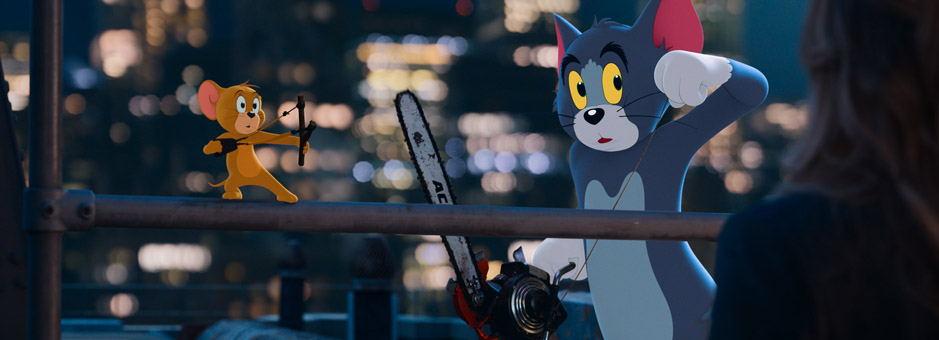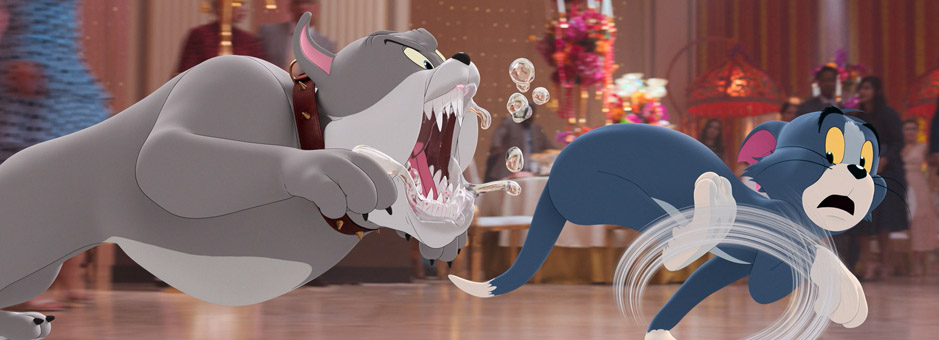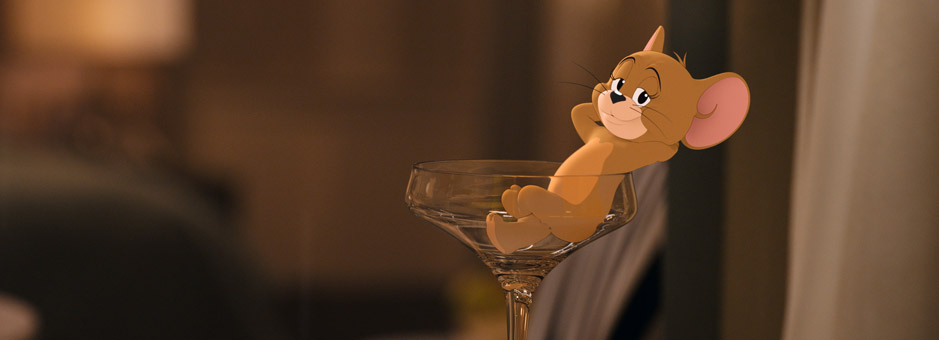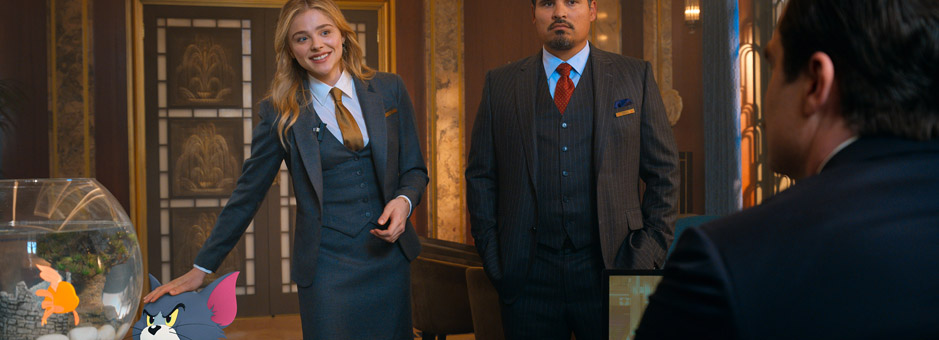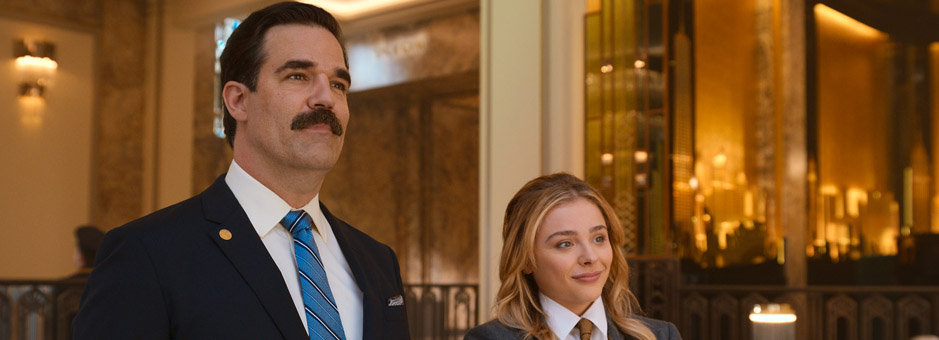Case Studies
Bringing ‘Tom & Jerry’ to life
Tom and Jerry is out now in theatres and on HBO Max in the US.
Colourist John Daro at Warner Bros shares how they built the colour on two continents for these classic characters.
Can you tell us more about the challenges of live-action, animated film?
It’s sort of like grading two separate movies. You have the live action film with its grade, and then the characters are on top. You have to keep the characters separate so they don’t take on the grades from the plate.
Next you grade the characters to be consistent from shot to shot, taking into account the various lighting conditions and local colour from the live action plate.
Remote collaborative work between London and LA was key for the project, could you please elaborate?
Arguably, the most crucial aspect of finishing this film was how Warner Bros Post Production Creative Services was able to support and complete this project during some of the most restrictive months of the pandemic.
Things were looking pretty bad on the Covid front when we started the grade in early December. Tim Story (Director), Chris DeFaria (Producer), and Peter Elliot (Editor) rotated the grade supervision since I was limited to only two creatives in the room at a time. We sent Baselight project files to DeLane Lea so that Alan Stewart (Cinematographer) and Frazer Churchill (VFX Supervisor) could review them in London.
Key to the success was the communication between editorial and VFX in Burbank and London – all via email, Teams and phone calls. The challenge was keeping everyone on the same page between two different time zones. Later on, we found out that having a 24-hour work cycle would also be one of the project’s greatest strengths.
What was the workflow like with the VFX and editorial departments?
Framestore London did the VFX shots for the show. There were numerous versions of every shot, right up until delivery – and a couple after, as usual. Framestore received ACES AP0 EXRs and returned the same back once work was complete with one key difference. Aside from the beautiful animation, the plates also acquired a number of matte channel layers in the EXR. Each character had mattes for their body, eyes, drybrush, and any props they were handling. This made for some extra prep prior to colour, but it paid off big time when we started the grade.
Conform and colour prep was completed at DeLane Lea by DI Editor Otto Rodd. While we were sleeping in LA, Otto would cut in the night’s VFX deliveries and connect all the mattes for use in the grade. With the number of characters and the granularity of the mattes, I can’t begin to tell you what a herculean effort this was. At the end of his day, he would send the project files for the updated reels back to LA where DI Editor Leo Ferrini would then take over while Otto slept.
The organisation that Otto and Leo imparted onto the timeline was second to none. Each character had its own layer to try and keep the timeline nice and tidy. This layer stayed consistent throughout the whole film even if the character was not in the shot. Tom was on layer 100, Jerry on 200, Spike on 400, and so on. Simply put, we had a lot of layers with the number of characters and props in the film.
How did you create the look with the team? How did you balance colour/treat the grade of animation and live action?
The direction for the show was bright, vibrant and colourful, and the look was derived from mostly Base Grade and Curves. I had my pass after some initial conversations with the filmmakers. Then they came in and we spotted the reels setting key looks for each scene. I worked those looks in a second pass of colour, at which point the filmmakers came back in to approve the final theatrical grade.
Once we had the initial grade for the live-action plate, each character got their pass. The characters had very specific targets. We treated them as if it was a cell-animated cartoon. There was minimal interactive lighting on them. The idea was to keep the characters consistent throughout the whole film. To achieve this, I composited the VFX character back over my plate grade so that they were unaffected by the colour of the live-action plate. Leo and Otto categorised each character's matte layer so that I could solo them out. In this way, it sort of works like a search in email. I could, say, “search” for all “Tom” shots and then Baselight would return a reel of shots that Tom was in. Then I would make corrections based on the character’s environment to ensure that they were perceived in the same way, taking local colour into account. This was a huge help in keeping the characters true to their looks throughout the film.
What did you use as colour references for this project? Did the original Tom & Jerry cartoons play a part?
The key art was very informative to the look. We also referenced the old cartoons. Tom over the years has had various looks ranging from grey to blue. We ended up going with the bluer Tom, which helped him pop off the typically warm backgrounds. By going with the blue Tom he also had a nice contrast with the warm browns of Jerry.
Which Baselight tools were particularly beneficial on this project?
I guess it goes without saying, but Reference along with the Matte Merge tools were my best friends. We had many matte passes on this show. The ability to add mattes together or subtract one from another was critical – especially for HDR.
What are the main benefits of Baselight when working on animated and stereoscopic productions?
I couldn’t imagine doing a complex VFX-based show on any other software. Baselight’s layer-based approach is crucial for working with the many matte passes supplied by VFX, as well as my own that I created with shapes and keys. The tools allow for unbelievable freedom in the grade with great speed of manipulation.
Tell us more about the deliverables.
The colour pipeline for the theatrical grade was ACES AP0 - ACEScct (grading space) - Show LMT -> P3D65. ACES 1.1 was used for the P3D65 ODT.
HDR grading started immediately after the theatrical was locked. We had a tight turnaround since the picture would be available simultaneously in theaters and on HBO Max. Since the animated characters bypassed the show LMT, their values, especially in the eye whites, were very high for HDR. Again, being able to solo the characters was a huge help for this pass.
How long did you work on this movie?
We started just before Thanksgiving and completed the deliverables in early January.
We heard that your next project is ‘Space Jam: A New Legacy’… can you say more?
I’m excited to join the roster of so many talented artists. Many of them have been working on the show for years now and it’s looking amazing. The biggest difference for SJ2 is that we are putting live action characters in the toon world, whereas Tom and Jerry were placed in our world. We are doing some interesting things on SJ2 in colour for all the exciting worlds visited.
Stay tuned for more on that later at johndaro.com and go check out the trailer on the head of Godzilla vs Kong!
“I couldn’t imagine doing a complex VFX-based show on any other software. Baselight’s layer-based approach is crucial for working with the many matte passes. The tools allow for unbelievable freedom in the grade with great speed of manipulation.”
Download




